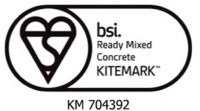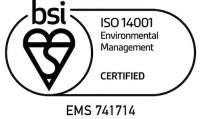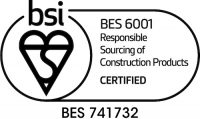Concrete is used for construction projects of all types, shapes and sizes around the world, such is its reputation as a reliable, durable and effective material, but for all its popularity, there is something of a lack of knowledge about the required sampling and testing processes. Luckily, we’re on hand to detail the concrete cube test – what it is, what it does and why it needs to be done more often.
Why should the test be done?
For those in the trade to the homeowner who wants a new driveway, the quality of materials used in any construction project is of the utmost importance. You want peace of mind – is this concrete certified by the appropriate authority? Will it serve me well for years or start to crack after a few months? By carrying out the concrete cube test, concrete can be certified as compliant, and thus customers will have confidence in its quality.
The safety and reliability of the concrete is the primary reason for the test, but for those who are providing the concrete, failure to test it will simply result in more expenditure further down the line when you are asked to prove its compliance with British Standards.
What do I need for the test?
You’ll need a few things in order to carry out a proper test of your concrete. They are:
- A bucket or wheelbarrow
- Slump cone
- Cube moulds
- Wooden board or polythene sheet
- Mound releasing agent and brush
- Damp cloth
- Concrete curing tank
- Trowel or concrete float
- A tape measure or steel rule
- A pen or marker for identifying samples
- Tamping rod or vibrating poker
What is the cube test?
1. Preparation
The first thing you need to do before any cubes are involved is a slump test. It is crucial that you do this to test the suitability of the concrete. Helpfully, we’ve written about this particular test before.
Once you’ve done the slump test and you are sure your concrete is usable, you can introduce the cube moulds. Usually, three cubes are taken from each sample of concrete, and the moulds used traditionally have dimensions of 150mm x 150mm x 15mm. Cube moulds must be manufactured to the specifications of the British Standards Institute. The specification in this case is BS EN 12390-1:2000.
Before you pour the concrete into the moulds, coat the mixture in a mould release agent to ensure that it’s as easy as possible to remove the concrete once you’ve finished testing. You can then scoop the concrete into the mould in three 50mm layers, compacting each one using a compacting rod. Once you’ve compacted the layers, tap the mould with a hammer to remove trapped air.
You will then need to level off the mixture, vibrate it until all surface bubbles are removed (don’t overdo it!) and then label each mould for ease of identification.
2. Storage
Cover the cubes with a damp cloth, and a plastic sheet and store them in a dry place at a temperature of 15-25 degrees. Between 16-72 hours later, the concrete should be removed from the moulds and placed into a curing tank, where the cubes hydrate properly. Make sure to record the temperature daily.
3. The Test
The cubes should be tested at 7 and 28 days, unless specified, with one cube tested at 7 days and two cubes tested at 28. Remove the cube from the curing tank, dry it, remove all grit and then use a calibrated compression machine to test it – this needs to be carried out by a qualified person, either at your company or in a certified test house.
The machine exerts a progressively stronger force onto the cube until the cube fails, with the rate of loading at failure indicating the maximum strength of the concrete. The minimum acceptable strength will have been given by the client or designer beforehand.
The concrete cube test is crucial in determining the strength of your concrete, or whether or not it is suitable to be used at all. With the huge variety of uses for concrete, it’s important that you’re fully aware of the quality of your mixture, for both safety, financial and convenience reasons.
EasyMix Concrete UK are proud to be a leading provider of concrete services for domestic and commercial customers throughout London. If you’d like to know more, please feel free to get in touch with us today.



